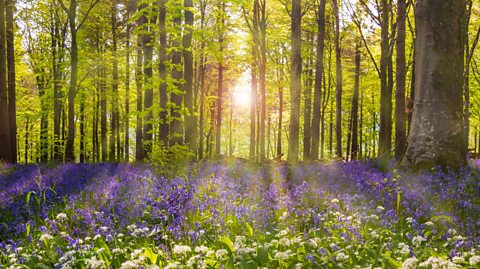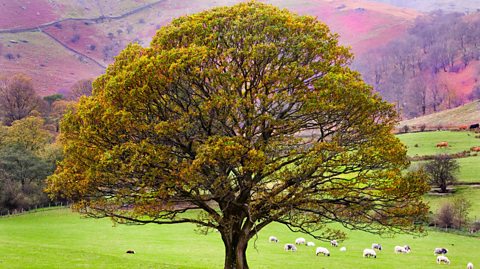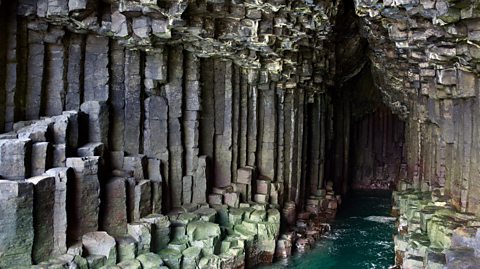Trees provide shelter, shade and the air we breathe - but thereÔÇÖs so much more you might not know about them.
The UK is the least densely-forested country in Europe, with about 13% woodland cover (compared to 35% average on the continent) - but thanks to conservation efforts such as reforestation campaigns, this number is rising. During the 20th Century, the figure was 5-6%, with the UK having lost a lot of its native woodland due to timber depletion in the First and Second World Wars, and following a centuries-long history of using wood for battleships and industry with little focus on reforestation.
Over the past decade, the worldÔÇÖs trees have had some amazing wins. In 2022, researchers from 90 countries discovered there may be 14% more species of trees on Earth than previously thought. Satellite footage released in January 2023 revealed that deforestation in the Amazon was down 50% compared to the previous year. And in March 2024 it was revealed that 45 rescued seeds of NorthumberlandÔÇÖs unlawfully felled Sycamore Gap tree had successfully sprouted, so whilst it's no replacement for the original, the ancient tree will get the chance to grow again.
Furthermore, our native forests have spectacular superpowers. From a tropical tidal defender to our resident Queen Tree, ┤¾¤¾┤½├¢ Bitesize investigates some real-life magic to nurture your love of trees.

1. Powers of replication: Devon whitebeams
There are plenty of trees that can self-pollinate as they have both male and female flowers on the same tree, and donÔÇÖt need to pair with surrounding trees to seed. But some trees reproduce asexually, meaning they create perfect genetic copies of themselves without fertilisation.
One such tree is the Devon whitebeam; this critically-endangered tree is only found in the English West Country and parts of Ireland, and is largely reliant on hedgerows. Hedgerows are BritainÔÇÖs largest wildlife habitat, stretching about 700,000km (around 434,959 miles) - thatÔÇÖs 1.5 times the distance from Earth to the Moon!
Lack of awareness about this tree means that itÔÇÖs under threat from hedgerow mismanagement - for example, over-trimming for long periods of time or clearing the habitats completely, which negatively affects the wildlife they support. Conservation efforts are helping reintroduce the whitebeam into forest environments, and its reproduction powers means it can grow in concentrated pockets. It also produces white flowers that pollinators love, and an edible fruit known historically as ÔÇÿOtmastÔÇÖ (or sorb apple) that birds eat and disperse the seeds inside.
In Devon, 100,000 native trees, including the whitebeam, are set to be planted to salvage the UKÔÇÖs lesser-known Celtic rainforest habitats. Rainforests - or temperate forests - are rare throughout the worldÔÇÖs coastal areas, and are important to biodiversity.

2. Intertidal giants: mangroves
Speaking of coastal areas, these magical trees canÔÇÖt grow in the UK - but they are under global protection. Mangroves are semi-aquatic trees that grow close to the equator, and theyÔÇÖre incredibly important to fighting climate change - so much so that many countries including the UK have pledged to support their conservation and restoration.
Mangrove forests, a type of Mangroves, seagrasses and salt marshes that capture and store carbon dioxide in natural sinks (known as ÔÇÿblue carbonÔÇÖ)., can survive in salty, low-oxygen soil, where most other plants would struggle. Not only are their roots connected to coral health, they also act as a natural barrier between the land and sea that prevents flooding and can lessen the devastation that extreme weather such as storms and tsunami surges can cause. With more than 60 species stretching from Floridian swamps to Kenyan coastlines, these trees are one of the planetÔÇÖs greatest climate warriors due to their ability to absorb and hold onto carbon found in sediment. This means they can absorb four times the amount of carbon dioxide than rainforests on land.
If that wasnÔÇÖt enough, theyÔÇÖre also natureÔÇÖs nursery for many amazing creatures - for example, in the Gal├ípagos blue forests you might find baby sharks, rays, flamingos, penguins, turtles and nesting ospreys.

3. Flower power: the common beech
Sometimes considered the queen of British trees due to its majestic canopy crown, the common beech tree has the ability to grow flowers. Or - more accurately - many different species of wildflowers and plants thrive where beeches do, thanks to the shady undergrowth they provide. These include box, coralroot bittercress and the rare orchid known as red helleborine. Several species of butterflies and moths also thrive among beeches, whose foliage is loved by caterpillars.
The common beech is considered truly native to the UK and is another self-pollinator, growing both female flowers and male A small, cylindrical cluster of flowers.. It doesnÔÇÖt stop there - beeches can live for more than 300 years, and their deadwood provides a home to rare fungi and animals. ItÔÇÖs no wonder that beech trees are prominent in Celtic folklore, as they give fairytale enchantresses a run for their money.

4. The A'Tuin of trees: the oak
The British oak is a giant of legends. Oak wood is one of the most durable, rot-resistant materials and consequently the Romans named the tree ÔÇÿroburÔÇÖ in Latin, the same word for strength.
But this wood is also nurturing: oak forests support over 2,300 species of animal, plant and insect - more than any other native forest. A single oak tree might house a whopping 300 species at any one time. Even as saplings, these trees provide food for wildlife and become natural havens as they grow bigger.
The phrase ÔÇÿwise old oakÔÇÖ also rings true: theyÔÇÖre considered ancient trees once they reach their 400th birthday. In Northampton, England, there are a series of oaks nicknamed ÔÇÿthe DruidsÔÇÖ which are estimated to be over 600 years old. Perhaps most importantly, their pollen is fed on exclusively by the rare and protected oak-mining bee, so the oak is certainly the king of maintaining woodland biodiversity.

5. Superhero siblings: alder and aspen
Perhaps the Superman of the tree world, the alder tree has many powers. Most notably, it thrives where not many other plants can. It loves water and doesnÔÇÖt rot when waterlogged, instead growing harder and stronger. Native to most of Europe as well as the British Isles, this tree grows around ponds, wetlands and marshes where its roots help prevent soil erosion. So, if you see an alder, you can trust water is nearby.
Meanwhile, aspen likes dry environments. Aspen also grows in the UK, but is used elsewhere in the world to fight wildfires. Its cultivation prevents fire from spreading, as they are slow to burn and quick to regenerate from barren soil.
Both can be used to purify industrial waste sites thanks to their nitrogen-fixing roots and symbiotic relationships with bacteria in the soil - truly a dynamic duo! WhatÔÇÖs more, these trees can be planted at home, along with other soil-enrichers such as willow and silver birch - just make sure youÔÇÖre permitted to do so where you live as regulations differ across the UK, and consider things to avoid like potential damage to buildings and structures nearby or obstructing your neighbours' light.

Where would we be without trees?
Trees provide more than just oxygen and shelter for wildlife. Trees also produce nuts, fruit, oils and materials including wood, pulp, gum, fibres, dyes, rubber and many more.
They even release chemicals called phytoncides, which strengthen our immune, hormonal, circulatory and nervous systems when we breathe them in. So trees literally heal us! Why not take a walk in the trees and see how it boosts your mood.
This article was published in June 2024.

Are these the most fantastic forests from across the globe?
┤¾¤¾┤½├¢ Bitesize takes a look at some of the most magical forests from across the world.

Four UK natural wonders that are shrouded in myth
Discover the legends surrounding four of the UK's natural wonders.

Have you heard any of these rare sounds?
┤¾¤¾┤½├¢ Bitesize have put together a handful of these rare sound clips for you to enjoy.
